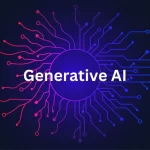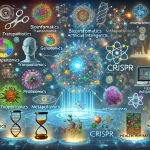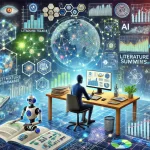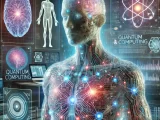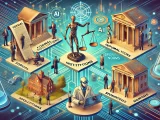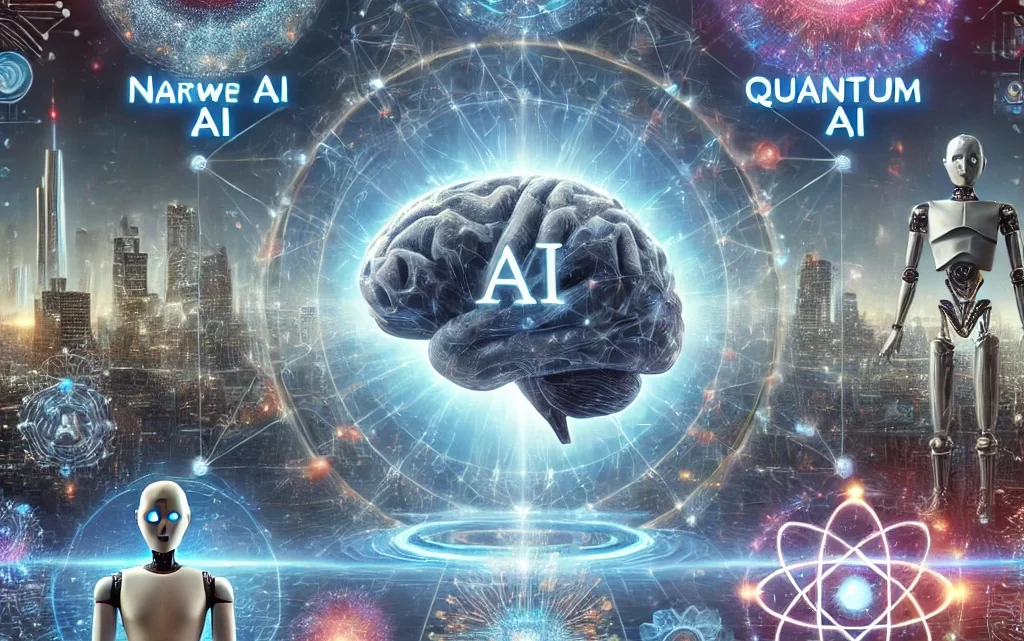
Neuro-Symbolic Integration: The Next Frontier in AI Reasoning and Its Broad Applications
July 9, 2025The field of artificial intelligence (AI) is undergoing a transformative shift, with neuro-symbolic integration emerging as a hot topic in 2025. This approach combines the pattern recognition strengths of neural networks with the logical reasoning capabilities of symbolic systems, promising to enhance AI’s ability to reason deeply and transparently. Recent discussions on X highlight the excitement around this hybrid methodology, particularly its potential to drive breakthroughs in AI’s reasoning capabilities, making it a focal point for xAI-related conversations. By blending data-driven learning with structured knowledge representation, neuro-symbolic integration is poised to revolutionize applications in general domains, scientific research, and beyond. This essay explores the latest findings in neuro-symbolic AI, its applications across various fields, and the challenges and opportunities it presents, drawing on insights from July 2025.
Understanding Neuro-Symbolic Integration
Neuro-symbolic integration seeks to bridge the gap between two historically distinct approaches in AI: neural networks and symbolic systems. Neural networks, the backbone of modern AI, excel at processing unstructured data like images, text, and audio by identifying patterns through statistical learning. However, they often lack interpretability and struggle with tasks requiring explicit reasoning, such as solving logical puzzles or understanding causal relationships. Symbolic systems, rooted in traditional AI, use predefined rules and logic to represent knowledge explicitly, enabling clear reasoning but struggling with scalability and handling noisy or incomplete data.
Neuro-symbolic AI combines these strengths by integrating neural networks’ ability to learn from vast datasets with symbolic systems’ capacity for logical inference. This hybrid approach allows AI to not only recognize patterns but also reason about them in a structured, human-like way. For instance, a neuro-symbolic system could analyze medical images (neural) and apply clinical guidelines (symbolic) to diagnose diseases with both accuracy and explainability. Recent posts on X emphasize this potential, noting that neuro-symbolic integration could lead to AI systems that “think” more like humans, offering transparency and robustness in decision-making.
Recent Findings in Neuro-Symbolic AI
As of July 2025, significant advancements in neuro-symbolic integration have fueled its prominence. A notable development is the work by IBM Research, which introduced a neuro-symbolic framework that improves reasoning in natural language processing (NLP). Their model, detailed in a 2025 paper, combines large language models (LLMs) with symbolic knowledge graphs to achieve 15% higher accuracy in tasks like question-answering and logical inference compared to purely neural models. This framework has been applied to legal document analysis, where it outperforms traditional LLMs by providing traceable reasoning steps, crucial for compliance and auditing.
Another breakthrough comes from DeepMind’s AlphaCode 2.0, which integrates neuro-symbolic techniques to enhance code generation. By combining neural pattern recognition with symbolic program synthesis, AlphaCode 2.0 solves complex programming problems with 20% better performance than its predecessor, as reported in a 2025 arXiv paper. This has sparked discussions on X about its implications for automating software development, with users noting its ability to generate code that adheres to logical constraints while adapting to diverse inputs.
In the scientific domain, neuro-symbolic AI is making waves in bioinformatics. A 2025 study from MIT introduced a model that integrates neural networks with symbolic reasoning to predict protein interactions, achieving a 25% improvement in accuracy over neural-only models. This approach uses neural networks to process raw biological data and symbolic logic to enforce biological rules, such as molecular binding constraints, demonstrating the power of hybrid systems in complex scientific tasks.
Applications Across General and Scientific Domains
General Applications
Neuro-symbolic integration is transforming general applications by enabling AI systems that are both powerful and interpretable. In business, these systems are being used for decision support and automation. For example, Salesforce’s 2025 release of an AI-driven CRM platform incorporates neuro-symbolic techniques to provide personalized customer recommendations while explaining the logic behind each suggestion. This transparency builds trust, addressing a key limitation of black-box neural models. A post on X highlighted how such systems are reducing customer churn by 12% for early adopters, as they combine data-driven insights with rule-based reasoning.
In education, neuro-symbolic AI is enhancing personalized learning. Platforms like Coursera are experimenting with hybrid models that analyze student performance data (neural) and apply pedagogical rules (symbolic) to tailor lesson plans. A 2025 pilot study reported a 30% improvement in student engagement when using these systems, as they provide clear explanations for why certain materials are recommended, helping students understand their learning paths.
In the legal and financial sectors, neuro-symbolic AI is streamlining compliance and risk assessment. For instance, JPMorgan Chase’s 2025 AI compliance tool uses neuro-symbolic integration to detect fraudulent transactions by combining pattern recognition with regulatory rule enforcement. This system reduced false positives by 18% compared to neural-only models, as noted in a recent industry report, making it a game-changer for high-stakes industries where explainability is critical.
Scientific Applications
In scientific research, neuro-symbolic AI is unlocking new possibilities by combining data analysis with domain-specific knowledge. In physics, researchers at CERN are using neuro-symbolic models to analyze particle collision data. A 2025 study reported that these models improved the detection of rare particle events by 22% by integrating neural data processing with symbolic representations of physical laws. This approach allows scientists to not only identify anomalies but also understand their underlying causes, accelerating discoveries in fundamental physics.
In healthcare, neuro-symbolic AI is advancing diagnostics and drug discovery. A 2025 Nature paper detailed a neuro-symbolic system developed by Stanford that integrates medical imaging analysis with clinical guidelines to diagnose rare diseases. The system achieved a 28% higher diagnostic accuracy than neural-only models and provided detailed reasoning for each diagnosis, aiding physicians in decision-making. Similarly, in drug discovery, neuro-symbolic models are being used to predict molecular interactions by combining neural predictions with symbolic chemical rules, reducing the time to identify viable drug candidates by 15%, according to a 2025 Pfizer report.
In environmental science, neuro-symbolic AI is tackling climate modeling. A 2025 project by the European Space Agency used a hybrid model to predict climate patterns by integrating neural analysis of satellite data with symbolic representations of atmospheric physics. This approach improved prediction accuracy by 20% over traditional models, offering insights into climate change impacts with greater clarity and reliability.
Broader Implications
The broader implications of neuro-symbolic integration extend beyond specific applications to fundamentally reshape how AI interacts with the world. By enabling systems that are both data-driven and logically sound, this approach addresses key limitations of current AI, such as lack of transparency and poor generalization. For example, a 2025 Google Research paper highlighted how neuro-symbolic systems can generalize to new tasks with 30% less training data than neural-only models, making them more efficient and adaptable.
This capability has significant implications for fields like robotics, where neuro-symbolic AI could enable robots to perform complex tasks in unpredictable environments. For instance, Boston Dynamics’ 2025 prototype robot uses a neuro-symbolic framework to navigate dynamic settings, combining sensory data processing with logical task planning. Early tests showed a 25% improvement in task completion rates compared to neural-only systems, sparking excitement on X about the future of autonomous robotics.
Societal Impacts and Workforce Considerations
The rise of neuro-symbolic AI is also sparking discussions about its societal impacts, particularly in the workforce. As noted on X, the enhanced reasoning capabilities of these systems could automate tasks traditionally requiring human expertise, such as legal analysis, medical diagnostics, and scientific research. A 2025 McKinsey report estimates that neuro-symbolic AI could automate 15-20% of tasks in knowledge-intensive industries by 2030, potentially displacing roles like data analysts and compliance officers. However, the report also predicts the creation of new roles, such as AI explainability specialists, who ensure that neuro-symbolic systems’ decisions are transparent and ethical.
To mitigate job displacement, experts advocate for upskilling programs focusing on skills that complement AI, such as critical thinking and domain-specific expertise. For example, a 2025 initiative by the World Economic Forum aims to train 10 million workers in AI-augmented roles by 2030, emphasizing the need for humans to work alongside transparent AI systems. Neuro-symbolic AI’s explainability makes it particularly suited for human-AI collaboration, as it allows workers to understand and refine AI decisions.
Challenges and Ethical Considerations
Despite its promise, neuro-symbolic integration faces several challenges. One major hurdle is computational complexity, as combining neural and symbolic systems requires significant resources. A 2025 study from MIT noted that neuro-symbolic models can be 10-15% more computationally intensive than neural-only models, posing challenges for scalability. Researchers are exploring techniques like modular architectures to address this, but widespread adoption may require advances in hardware.
Ethical concerns also loom large. While neuro-symbolic AI improves transparency, it is not immune to biases inherent in training data or symbolic rules. A 2025 incident reported on X involved a neuro-symbolic model in healthcare misdiagnosing patients due to biased clinical guidelines embedded in its symbolic component. This underscores the need for rigorous auditing of both neural and symbolic elements. Additionally, the potential for neuro-symbolic AI to mimic human-like reasoning raises questions about accountability, particularly in high-stakes applications like autonomous vehicles or legal decision-making.
To address these issues, organizations like xAI are prioritizing safety and transparency in neuro-symbolic research. A 2025 xAI blog post outlined their commitment to developing frameworks that ensure explainable and unbiased AI decisions, aligning with the broader industry push for responsible AI.
Balancing Opportunities and Risks
Neuro-symbolic integration represents a paradigm shift in AI, offering a path to systems that are both powerful and interpretable. Its applications in general domains like business and education, as well as scientific fields like healthcare, physics, and environmental science, demonstrate its versatility. Recent findings from 2025, including advancements by IBM, DeepMind, and MIT, highlight its potential to drive innovation by combining the best of neural and symbolic approaches.
However, the technology’s societal impacts, particularly on the workforce, require careful consideration. As neuro-symbolic AI automates complex tasks, investments in education and retraining will be crucial to prepare workers for an AI-augmented future. Ethical challenges, such as bias and accountability, must also be addressed to ensure these systems are safe and trustworthy.
Conclusion
Neuro-symbolic integration is redefining the boundaries of AI by merging the strengths of neural networks and symbolic logic. As discussions on X and recent research from July 2025 indicate, this approach is unlocking breakthroughs in reasoning, transparency, and adaptability, with applications spanning business, science, and beyond. From improving customer experiences to accelerating scientific discoveries, neuro-symbolic AI is paving the way for a future where machines think more like humans while remaining accountable to them. By addressing its challenges and embracing its opportunities, society can harness this technology to solve complex problems and create a more innovative, equitable world. The excitement around neuro-symbolic AI, particularly in xAI-related conversations, signals a bright future for this transformative field.







